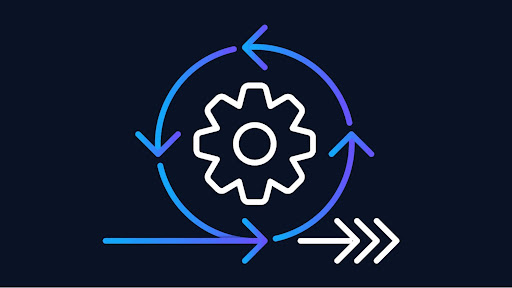Step-By-Step Guide To Automate Workflows

All businesses always involve at least one workflow.
In a simple coffee shop, for example, preparing the shop’s signature brew is a workflow. A freelancer creating an invoice to send to their client is also a workflow.
Most businesses, however, deal with more than one workflow that is intricately connected, and how efficient a company can execute its workflows will affect how efficient and productive the whole organization is.
One of the key ways you can improve your workflow’s efficiency is through workflow automation, and here we will show you how in an easy step-by-step guide.
Step-By-Step Guide To Workflow Automation
As the name suggests, workflow automation is the process of using technologies (software solutions, physical equipment, and even robots) to automate the execution of a workflow.
All kinds of workflows can technically be automated, provided you have the right technology and an adequate budget.
By automating repetitive and error-prone workflows, businesses can reduce time and resources and free up employees’ time, allowing them to focus on tasks that demand more of their core competencies while at the same time improving the consistency of execution (reducing human errors).
Follow these steps to start automating your workflows right away:
Step 1: Picking the right workflow to automate
Due to the limited time and resources, it’s hard to automate all of your workflows, so it’s essential to pick which workflows you’d want to prioritize first for automation.
If you have many different workflows, then choosing which workflow(s) to optimize and automate first can be pretty challenging, but generally, you have three main approaches:
- Strategic: picking a workflow with (potentially) the most significant impact on your business, for example, when made more efficient, will significantly improve your revenue.
- Reactive: picking a workflow with apparent flaws and inefficiencies to fix these issues with optimization and automation.
- Customer-centric: picking a workflow, typically customer-facing, that will directly affect customer satisfaction; for example, when optimized will shorten the customer’s queue time.
Step 2: Data gathering
Once you’ve identified the workflow you are going to automate; the next step is to gather as much information as you can about the workflow, including:
- The stakeholder(s) involved in the workflow’s current execution, including the person authorized to make changes to this workflow
- The start and endpoints of the workflow
- History of the workflow, like whether there have been any significant changes in recent times
- How long does the entire process take?
- The failure rate of the current execution
And so on.
The more information you can gather about the workflow, the better you can optimize and automate it. Observe how the workflow is currently executed and interview stakeholders to gain their feedback.
Step 3: Mapping the workflow
The next step is to visualize the workflow in a workflow diagram for analysis purposes. You can use various techniques to map the workflow, but the most common method is to use an ANSI flowchart.
Also, while you can use a pen and paper to create the workflow diagram, most workflow automation solutions will offer a visual builder to create a flowchart diagram with a drag-and-drop approach.
For example, with Aproove’s workflow automation solution, you can easily create a workflow diagram and use the same platform to set up automation based on this flowchart diagram. You can, for example, fine-tune the automation by adding conditional rules into the workflow diagram.
This step aims to accurately map the workflow as-is (visualizing the workflow as it is currently executed) based on the information you’ve gathered above.
Step 4: Choose the right automation technology solution
Different workflows may require other technologies (software and hardware) to automate them properly. In this step, you’ll need to identify these technologies for the chosen workflow.
However, as a foundation, you should choose the right workflow automation platform for your unique needs. While there’s no one-size-fits-all answer for this, here are some key features you should look for when choosing a workflow automation platform:
- Easy to use (preferably drag and drop) form and workflow diagram builders
- Intuitive interface with clear documentation
- Analytics and reporting features
- Mobile-friendliness
- Automatic notifications and reminders for your stakeholders
- Integration with other existing solutions
Step 5: Analyzing and optimizing the workflow
A crucial consideration when automating a workflow is that the workflow needs to be as efficient as possible first before automation gets implemented.
Automating inefficient workflow will only end up amplifying the inefficiencies so that it will be counterproductive.
So, analyze the workflow diagram while considering:
- Are there any bottlenecks or inefficiencies in the workflow?
- Are all steps needed, or can some of them be simplified/replaced with more efficient ones/eliminated?
- Does every stakeholder have enough information to perform their task or perform any decision (information availability will also be critical in implementing automation)?
Optimize the workflow based on the analysis results to make sure it’s as efficient as possible. Involve stakeholders of the workflow to provide feedback on whether the workflow is already optimal and efficient, and don’t be afraid to repeat the workflow analysis efforts as needed.
Step 6: Implement and monitor automation
You should test automated workflows before you fully implement them, so you can ensure they work correctly and minimize errors. Involve the stakeholders of the workflow, and document your test results.
Once you’re sure, Implement the automation as planned and thoroughly monitor the performance by tracking:
- Time spent completing tasks
- Number of steps it took to finish the workflow
- Error rate
- Cost to automate the workflow to completion
- Accuracy and integrity of data
Compare workflow results before and after the automation, note improvements, and adjust the workflow to optimize it further when necessary.
Remember that there is no such thing as a perfect workflow, and you can continuously improve the workflow as your business grows. Monitor everything and re-optimize accordingly.
Wrapping Up
With workflow automation, you can free up your employees’ valuable time, so they no longer need to perform repetitive administrative tasks. You can also reduce or even eliminate risks associated with human errors, improving the overall quality of the workflow’s results.
By following the step-by-step guide we’ve shared above, you can start optimizing and automating your most essential workflows, which will ultimately improve your business’s overall productivity and efficiency.

 Stars-923: Unveiling the Mystical Cosmos
Stars-923: Unveiling the Mystical Cosmos  Buying Guide for Short-Throw 4K Projectors for Gaming
Buying Guide for Short-Throw 4K Projectors for Gaming  5 Best Wireless Apple CarPlay Adapters in 2024
5 Best Wireless Apple CarPlay Adapters in 2024  The Essential Role of Animated Explainer Videos in Tech Documentation
The Essential Role of Animated Explainer Videos in Tech Documentation  How Do You Apply Agile Testing Principles And Practices Across Different Domains And Contexts?
How Do You Apply Agile Testing Principles And Practices Across Different Domains And Contexts?  What Are The Benefits And Challenges Of Using Mock Objects In TDD?
What Are The Benefits And Challenges Of Using Mock Objects In TDD?